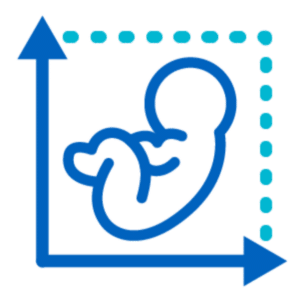

Examining nutritional guidance in the pediatric intensive care unit (PICU)
Malnutrition is common in hospitalized children, including those admitted to the PICU.1,2 According to one meta-analysis of 15 studies involving 4,331 study participants, the pooled prevalence of malnutrition among pediatric critically ill patients was more than 37%.3 That’s an alarming number, and the adverse outcomes may be severe. Inadequate nutrition can result in “loss of lean body mass, muscle weakness, developmental/intellectual delays, infections, immune dysfunction, delayed wound healing, prolonged length of hospital stay, and even death.”1
The causes of pediatric malnutrition are multifactorial—a disease, an injury, or even socioeconomics can hinder a child’s ability to receive adequate nutrition.1,4 Whatever the reason may be, appropriate nutrition support therapy in the PICU, including parenteral nutrition (PN), is an important consideration for helping these young patients grow. Learn more about the role of PN in pediatric malnutrition in our blog.
Because malnutrition is prevalent in critically ill children, and high-level evidence for nutrition practices in the PICU have been scarce, the Society of Critical Care Medicine (SCCM) and the American Society for Parenteral and Enteral Nutrition (ASPEN) developed guidelines in 2017 that offer recommendations for nutrition support in these vulnerable patients.2 They evaluated literature, expert opinions, and clinical practices to address some of the questions regarding best practices for nutrition screening, use of PN, and more.2
Let’s dive into some of their recommendations.

What is the impact of nutrition status on outcomes?
“Based on observational studies, malnutrition, including obesity, is associated with adverse clinical outcomes, including longer periods of ventilation, higher risk of hospital-acquired infection, longer PICU and hospital stay, and increased mortality. We recommend that patients in the PICU undergo detailed nutrition assessment within 48 hours of admission.
Furthermore, as patients are at risk of nutrition deterioration during hospitalization, which can adversely affect clinical outcomes, we suggest that the nutrition status of patients be reevaluated at least weekly throughout hospitalization.
Quality of evidence. Very low.
GRADE recommendation. Strong.”2

What are the best practices to screen and identify patients with malnutrition or those at risk of nutrition deterioration?
“On the basis of observational studies and expert consensus, we recommend that weight and height/length be measured at admission to the PICU and that z scores for body mass index (BMI) for age (weight for length, <2 years) or weight for age (if accurate height is not available) be used to screen for patients at extremes of these values. For children <36 months old, head circumference must be documented.
Validated screening methods for the PICU population to identify patients at risk of malnutrition must be developed. Screening methods might allow limited resources to be directed to high-risk patients who are most likely to benefit from early nutrition interventions.
Quality of evidence. Very low.
GRADE recommendation. Strong.”2
Fresenius Kabi: at the forefront of PN
As pioneers in clinical nutrition, we have innovations that nourish patients of all ages who require PN. Learn more about our dedication to providing more options for more patients: www.FreseniusKabiNutrition.com